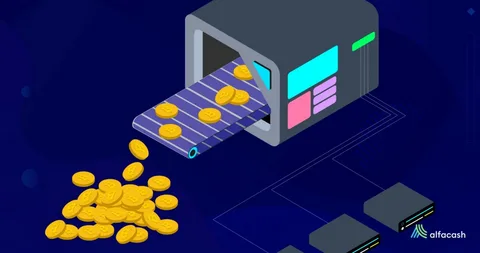The global Carbon Dioxide Market is gaining strong momentum as industries increasingly rely on CO₂ for diverse applications, from food and beverage carbonation to healthcare, chemicals, and enhanced oil recovery (EOR). The Carbon Dioxide Market size was valued at USD 10.8 billion in 2023 and is projected to reach USD 17.1 billion by 2032, growing at a CAGR of 5.2% during the forecast period (2024–2032). The rising use of CO₂ in sustainable fuel production and industrial processes positions it as a key enabler in the transition toward a low-carbon economy.
Growing Demand for Industrial and Environmental Applications
One of the major growth drivers for the Carbon Dioxide Market is its increasing role in industrial processes such as welding, metal fabrication, and chemical synthesis. CO₂ is a critical raw material in the production of methanol, urea, and salicylic acid. Furthermore, its use in enhanced oil recovery (EOR) and carbon capture and utilization (CCU) is expanding rapidly as industries aim to reduce emissions and extend the life of oil reservoirs.
In the food and beverage industry, CO₂ is indispensable for carbonation, packaging, and preservation. The growing popularity of carbonated soft drinks, beer, and sparkling water has kept demand steady in this segment. Additionally, CO₂ plays a vital role in modified atmosphere packaging (MAP), which helps extend the shelf life of perishable goods — an increasingly important factor as global food distribution chains become more complex.
The Carbon Dioxide Market is also witnessing significant traction in the medical and healthcare sector. CO₂ is used in minimally invasive surgeries (laparoscopy and endoscopy), cryotherapy, and as an insufflation gas in various procedures. With the expansion of healthcare infrastructure in emerging economies, the consumption of medical-grade carbon dioxide is set to rise steadily over the coming decade.
Market Drivers
A key driver propelling market growth is the expansion of carbon capture, utilization, and storage (CCUS) technologies. As nations commit to achieving net-zero emissions, CO₂ capture and reuse are becoming central to industrial decarbonization strategies. Government policies and incentives supporting CCUS adoption are boosting investments in CO₂ recovery and purification technologies, driving overall market demand.
Another driver is the rising focus on sustainable fuels. Captured CO₂ is increasingly being utilized to produce synthetic fuels and green methanol, aligning with global efforts to decarbonize transportation and heavy industry. Companies are investing heavily in projects that integrate CO₂ recycling into their energy systems, which not only reduces emissions but also creates a profitable circular carbon economy.
Additionally, the rapid growth of the cold chain logistics sector has enhanced the demand for solid CO₂ (dry ice). With expanding pharmaceutical, food, and e-commerce industries, the need for reliable cold storage and transportation has surged. Dry ice is widely used for vaccine preservation, frozen goods transport, and temperature-sensitive logistics, further fueling market expansion.
Technological Advancements and Industry Developments
Recent advancements in CO₂ recovery and purification systems are enabling industries to capture and reuse carbon more efficiently. Technologies like membrane separation, cryogenic distillation, and adsorption-based capture systems have become more energy-efficient and cost-effective, encouraging their deployment in manufacturing and power generation facilities.
Several major players are also investing in biogenic CO₂ production — capturing CO₂ from fermentation and bioethanol plants rather than fossil sources. This trend supports a circular carbon model, aligning with international climate targets and corporate sustainability goals.
For example, beverage companies are increasingly sourcing renewable CO₂ for carbonation to reduce their environmental footprint. Similarly, industrial gas producers are partnering with renewable energy and waste-to-fuel projects to secure sustainable CO₂ supplies. These collaborations are strengthening the overall value chain and driving innovation across the sector.
Emerging Opportunities
The Carbon Dioxide Market presents significant opportunities in emerging regions such as Asia-Pacific, Latin America, and the Middle East, where industrialization and infrastructure development are accelerating. Asia-Pacific, in particular, is expected to dominate the market through 2032 due to rapid expansion in manufacturing, chemicals, and food processing industries.
Moreover, the integration of CO₂ utilization into hydrogen and synthetic fuel projects is opening new avenues for growth. Green hydrogen producers are using captured CO₂ to create e-fuels, methanol, and other chemicals — enhancing both sustainability and profitability. This cross-industry collaboration between energy and industrial gas producers is set to shape the market’s future trajectory.
Future Outlook
Looking ahead, the Carbon Dioxide Market is expected to continue its upward trend as both regulatory frameworks and corporate strategies emphasize sustainability and emission control. The market will likely see growing participation from sectors such as energy transition, advanced materials, and biotechnology, where CO₂ plays an essential role in innovation.
Furthermore, ongoing research into direct air capture (DAC) technologies could redefine how CO₂ is sourced, enabling large-scale removal of atmospheric carbon. This advancement would not only help mitigate climate change but also provide a new supply stream for industrial CO₂ applications.
Conclusion
The Carbon Dioxide Market stands at a pivotal intersection of industrial growth and environmental responsibility. Its expanding use across multiple sectors — from beverage carbonation and healthcare to carbon capture and green fuel production — underscores its economic and ecological importance. As industries strive to balance profitability with sustainability, carbon dioxide is transforming from a waste byproduct into a valuable resource driving the global green economy forward.
FAQs
Q1: What is the CAGR of the Carbon Dioxide Market?
The market is projected to grow at a CAGR of 5.2% during the forecast period 2024–2032.
Q2: What is the forecast period for the Carbon Dioxide Market?
The forecast period for the market is from 2024 to 2032, with steady growth driven by industrial and environmental applications.Q3: Which region is expected to lead the Carbon Dioxide Market growth?
Asia-Pacific is expected to lead the market growth due to rapid industrial expansion and rising adoption of CO₂-based technologies.



